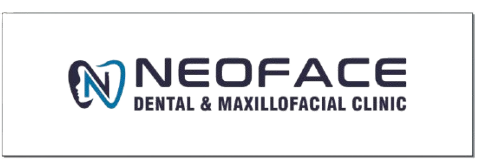Early detection of oral cancer is crucial in saving lives. Spotting the disease early can increase the chances of successful treatment, reducing complications and improving the quality of life. Oral cancer often remains undetected until it’s advanced, making early spotting all the more critical. When found early, treatments are more effective, less invasive, and significantly enhance survival rates. Understanding this process and encouraging regular check-ups can lead to better health outcomes. By spreading awareness about early oral cancer detection, we empower people to take control of their health and increase survival chances.
Understanding the Importance of Early Oral Cancer Detection
Oral cancer affects thousands of individuals globally. Statistics indicate it is more common than many realize, impacting diverse demographics. Catching this disease early dramatically improves survival rates. Early signs of oral cancer are often subtle but critical to recognize promptly.
Regular dental exams for oral cancer are essential. Dentists can spot the early signs at routine check-ups, increasing the chances of early intervention when early oral cancer treatment options are most effective. Unfortunately, myths around oral cancer and dental visits can prevent timely detection. Some believe oral cancer only affects smokers or the elderly, but this isn’t true.
Accurate information can dispel these misconceptions. Benefits of early oral cancer detection include: higher survival rates, fewer surgeries, and lower medical expenses. Community screening for oral cancer enhances awareness and accessibility to diagnostics. Public health initiatives play a vital role in reaching more people, particularly those in rural or under-served areas. These programs offer hope and underscore the significance of early intervention in saving lives.
Community efforts can make early oral cancer detection a shared responsibility, improving outcomes and raising awareness about this often-overlooked disease. Supporting these initiatives ensures that more individuals benefit from early detection, turning the tide against oral cancer’s severe impact.
Recognizing Early Signs and Symptoms at Home
Being aware of your body’s changes is vital. People can spot early signs of oral cancer by self-examining at home. Look for:
- Unusual lumps or thickening in the mouth.
- Persistent mouth sores that don’t heal.
- Loose teeth without a clear cause.
If any of these signs appear, getting a medical check-up is crucial. Acting swiftly could save lives. Your dentist or doctor can determine if further steps, like a biopsy for oral cancer detection, are needed.
Lifestyle choices also impact oral cancer risk. A healthy diet and avoiding tobacco significantly lower the chance of developing this cancer. Smoking cessation not only benefits overall health but is crucial for preventing oral cancer.
However, accessing health services can be challenging for some. People in rural and under-resourced areas might struggle with finding timely care. Public health efforts can help by providing resources and mobile clinics to those communities, ensuring they, too, have access to screening for oral cancer and vital health services.
By understanding the importance of early oral cancer detection, individuals can take proactive steps in their health journey. Recognizing signs early and making thoughtful lifestyle choices are initial steps in preserving oral health and preventing cancer.
Innovations and Technologies in Oral Cancer Detection
Technological advances have revolutionized our approach to oral cancer detection. New methods, like the saliva test, offer innovative ways to spot the disease early. These tests are easy to administer compared to traditional methods, making early oral cancer detection more efficient.
Oral cancer detection devices and AI are transforming diagnostic accuracy and speed. Machines analyze signs that humans might miss, catching cancer sooner. This technology is especially beneficial for remote areas where access to expert screenings is limited.
Combining AI with imaging allows for non-invasive screenings. Residents in rural regions can access convenient, less intimidating tests. This accessibility empowers communities, mitigating fears and obstacles preventing early detection.
Ongoing research continually improves innovations in oral cancer detection. New technological shifts redefine early detection parameters, offering hope for better outcomes. As these advancements integrate into mainstream healthcare, they hold promise for increased accessibility, reduced costs, and improved survival rates for those facing the threat of oral cancer.
Prevention Strategies and Regular Check-Ups
Simple lifestyle changes can significantly reduce oral cancer risks:
- Maintain a healthy, balanced diet rich in fruits and vegetables.
- Avoid alcohol and tobacco, which are major risk factors.
Regular dental appointments are crucial. During these visits, dentists perform thorough evaluations, checking for issues that could signal oral cancer early. For those at high risk, more frequent visits might be recommended.
Prevention extends beyond the dentist’s office. Steps like HPV vaccination protect against potential cancer risk factors. Online resources and community programs provide smoking cessation support and guidance.
Empower yourself by taking control of your oral health. Regular check-ups, informed choices, and proactive steps toward wellness are key to preventing oral cancer. Championing early oral cancer detection ensures a healthier future for you and your loved ones.


